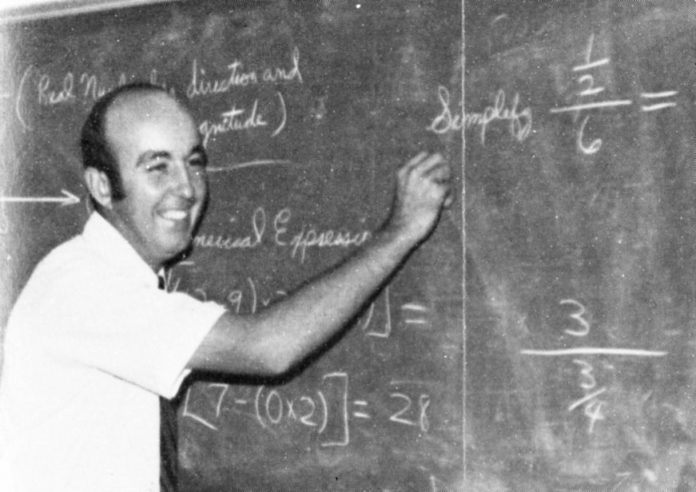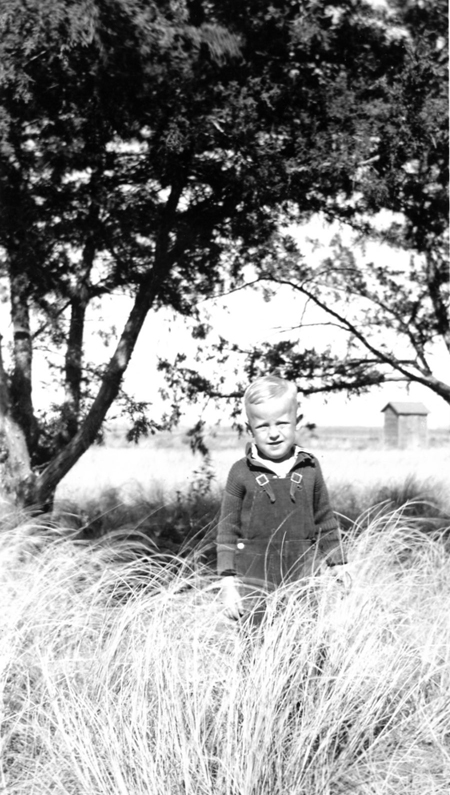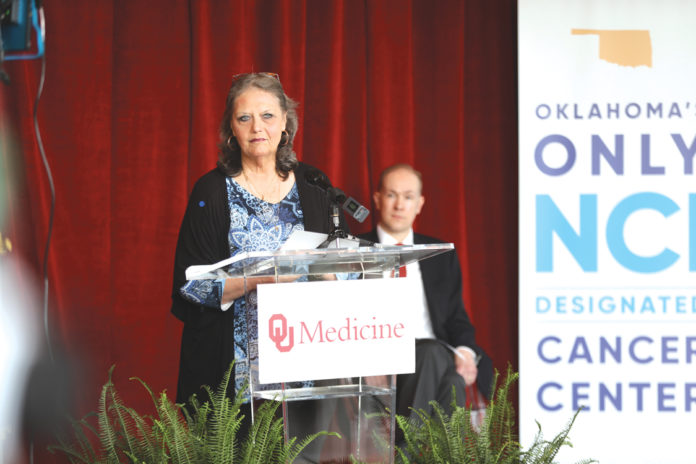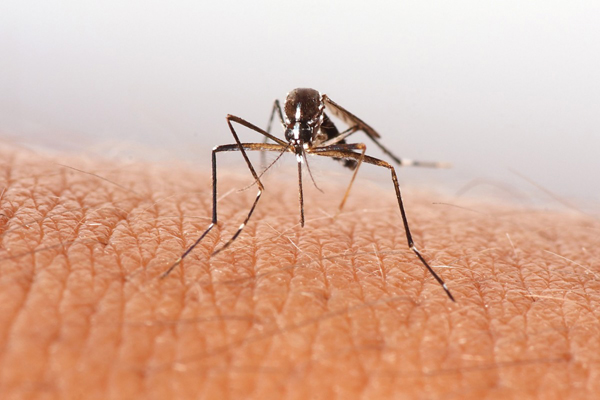For a second year, The Toby Keith Foundation will be hosting The Fish Bowl at Lake Texoma on June 20, 2020. First place in the Bass division is $10,000 (based on 150 boats) and a $500 prize goes to the worst fishermen. “We are aware that many nonprofits have had to cancel their fundraising events during the COVID-19 pandemic and we’re no different,” said Juliet Nees-Bright, executive director of The Toby Keith Foundation. She added that they have also pushed back their largest annual fundraiser, The Toby Keith & Friends golf tournament to October 17, 2020. “We are beyond grateful and excited to have found ways to revise The Fish Bowl to ensure everyone’s safety and keep it on our schedule,” added Nees-Bright.
The Foundation’s goal is to keep the momentum of this event going through a difficult time and do everything in their power to keep the fishermen safe while they enjoy the tournament. The Captains meeting will not be mandatory this year and will only be for those who did not register online or send in their registration via mail. Another major safety measure includes a drive-thru weigh-in. Both the Captains meeting and weigh-in will be held at Rally Pavilion, Rooster Creek. Online registration is open until 6 p.m. on June 19th at https://www.tobykeithfoundation.org/news-events/. If you send in your entry by mail after June 1st, please contact the foundation office at (405) 271-6552 to confirm that they’ve received your paperwork. Proceeds from the event benefit OK Kids Korral, a cost-free home for children battling cancer. Hundreds of children from across Oklahoma and surrounding states have stayed at OK Kids Korral while they are receiving cancer treatments. If you would like to know more about OK Kids Korral, please visit www.tobykeithfoundation.org.
“We are so grateful to the companies who supported us our first year and who have already signed on again this year amidst COVID-19,” said Nees-Bright. “Our sponsors are part of our family and they truly care about our Korral kids who are battling cancer.” Title sponsor is Precision Construction out of Oklahoma City and Florida. Other sponsors who signed on for a second year are: Bank7, AFR Insurance, Future Bass Team Trail, Vernon Auto Group and Keystone Broadcasting. The newest sponsorship addition growing the event is Applied Industrial Machining.
For more information about the event or to become a sponsor, call The Toby Keith Foundation at (405) 271-6552 or visit https://www.tobykeithfoundation.org/news-events/.
THE FISH BOWL TOURNAMENT – $10,000 First Place Bass
Oklahoma Voters to decide expansion

by Bobby Anderson, Staff Writer
Last fall, some 313,677 Oklahomans signed their name to a petition to put Medicaid expansion in our state to a vote of the people.
It was the largest signature mandate for any state question in Oklahoma history.
On June 30, all Okahomans will get the chance to weigh in on whether or not the state will take advantage of federal funding to help the most vulnerable in our state pay for healthcare.
Medicaid expansion through a yes vote on State Question 802 would help Oklahomans struggling to get by – like individuals making less than $17,000 a year or a family of three making less than $29,000.
People who would be covered by Medicaid expansion include parents who work hard at jobs that don’t offer insurance, seniors nearing retirement who have lost their healthcare, and Oklahomans who are trapped in the coverage gap –meaning they make too much money to qualify for Medicaid but too little to afford care on the insurance exchange.
Medicaid expansion provides a lifeline for Oklahoma families who are slipping through the cracks in our healthcare system and it halts the agonizing choice that too many families face when deciding if they can afford critical medical care.
“I think now – more than ever – Oklahomans understand that having healthcare is so critical,” said Amber England, campaign manager for Yes on 802, an advocacy group that has helped get the initiative on the ballot. “Too many Oklahomans find themselves in a position working two or three jobs trying to make ends meet but they have to make the decisions like ‘Do I buy groceries or medicine.’”
The Yes On 802 campaign began April 2019 to put Medicaid expansion on the ballot in 2020. It is supported by a growing coalition of Oklahoma doctors, nurses, patients, business executives, non-profit organizations, healthcare advocates and hospitals.
Voters from across the state participated in the signature collection during a 90-day period.
Thirty-six states have already expanded Medicaid, and billions of tax dollars are already going to those states. Last year, voters in Utah, Nebraska, and Idaho all approved Medicaid expansion.
Expanding Medicaid would bring more than a billion of our dollars back to Oklahoma every year. The money we pay in federal taxes now is already paying for healthcare in states like New York and California.
Oklahoma has the second highest uninsured rate in the U.S. at 19.7 percent. Among low income (<138% of the federal poverty level) adults, the uninsured rate is 32% in metro Oklahoma counties, and 38% in rural counties.
One in 12 Oklahoma children (below 200 percent of poverty) is uninsured (8.1%).
England explained expanding Medicaid allows the state to be reimbursed $9 for every $1 the state spends on Medicaid care.
“It’s not just the morally right thing to do but the fiscally right thing,” England said.
The Yes on 802 campaign was nearly halfway through its effort to offer 30 house parties in 30 days to inform voters of the state questions before social distancing interrupted the effort.
But the current global pandemic brought the issue into everyone’s homes.
“Oklahomans understand the value of healthcare more than ever,” England said. “Too many Oklahomans over the past two months have been personally impacted by this virus. Many have not had access to the care they need and I think it’s more personal to folks now.”
Proposition 802 will appear on the June 30 ballot.
If passed, the measure would add a requirement to the state Constitution mandating that it offer Medicaid coverage to qualifying working age people in Oklahoma no later than July 1, 2021
With current social distancing guidelines, England encourages voters to ensure they will be able to vote by requesting an absentee ballot be mailed to them.
The Oklahoma Hospital Association is an advocate in increasing Medicaid coverage in Oklahoma.
“This pandemic has really highlighted the need for increasing the number of Oklahomans with health insurance coverage and we’re still committed to seeing Medicaid expansion through to fruition. Now more than ever, hospitals need this coverage expansion in order to continue serving their communities,” said Patti Davis, president, Oklahoma Hospital Association.
TRAVEL / ENTERTAINMENT: Recalling Two Upscale Dining Experiences

Photography and Text by Terry “Travels with Terry” Zinn t4z@aol.com
While at press time we are under travel and destination restrictions, I find it comforting to revisit past travel and dining experiences, like this one in South Florida.
Often the best part of visiting a destination is splurging for an upscale gourmet meal, or two. This is the case in Miami Florida where the ambiance, service and ultimate perfect meal comes together with the BLT Prime at the National Doral Resort Hotel and dinning at the infamous South Beach Gianni Versace Villa.
Sometimes the simplest of menu items, if prepared to perfection, can be the memory you take away from a destination city. The BLT Prime at the National Doral Resort’s Filet Mignon is a prime example. Despite the Miami August heat dining outside overlooking the Big Monster golf course can be elegant for sipping your pre dinner cocktail, but soon you may want to move in to the elegant dining room with a more comfortable temperature. Sometimes the mind over thinks the body’s own thermostat and you have to concede to air condition comfort.
You might think a good prime filet with accompanying sides, is not a complicated gourmet challenge, but when prepared with skill it can be an over the top savory satisfaction. This is the case at the BLT Prime.
On another upscale over the top luxury experience, book a dinner or two at the exclusive, but accessible Villa Versace in the middle of popular South Beach. There are two dining areas in this infamous home of fashion and style designer Gianni Versace. If you are staying at any of the affordable South Beach icon Art Deco hotels, it is a pleasant stroll down Ocean Drive, either on the less traveled Eastern ocean park side, or if you prefer to dodge dinners at the many outside bumped out tables on the Western side. Needless to say Ocean Drive is always a traffic lover’s delight, and in the evening even more so where many come just to drive by the pastel colored lights illuminating classic art décor architecture.
The mansion was officially named Casa Casuarina for more than a decade, where it first operated as a private club and then as a boutique hotel. It reopened in 2013 under new management. Locals still refer to it as ‘the Versace mansion’.
It is reported that Versace bought a neglected three-story, Mediterranean-style home, originally built in 1930 by Standard Oil heir Alden Freeman, and a dilapidated hotel next door in 1992 and spent $33m on renovations.
To add to the villa’s notoriety Versace was shot dead on its front steps by serial killer Andrew Cunanan in 1997. The 10-suite Villa by Barton G boasts a 54-foot ‘thousand mosaic’ swimming pool lined in 24-carat gold, which was designed by Versace.
You will be met by the guard at the street side gate and then you may announce yourself to your hostess coming out of the main entrance. You will be invited to sit in the patio area, a formality even though you have previously made your dining reservations which are strictly required. You will be told no cameras are allowed and so you are instructed to check such at the reception desk. Cel phone cameras are currently allowed although standard cameras are not. In time you are escorted to your table, past an elaborate interior courtyard with fountain and past the intimate cocktail bar. By now you know you are somewhere special.
The interior dining room is almost oppressive with its intricate walls of rock and tile mosaics. The mood is brooding and your fellow room diners explode your imagination when you conger up what might be their history. The outside terrace overlooking the Roman villa styled pool and cabana area is the delight of South Beach. You almost hate to order your meal in anticipation of its finish and your need to leave. Again a perfect beef filet is an exquisite choice. If you are offered a dinner salad to start off, be warned the size is gigantic and so is the variety of greens.
A Martini toast to Gianni and this Villa is a must, to pay tribute to a man of means and his open to the dining public of his South Beach Villa. While an upscale dining experience may not be in your travel budget, but is there a price for an over the top memory you recall year after year? Our own grand dining memories are a comfort in this time of restrictions.
For more information and updates visit: http://vmmiamibeach.com/
Mr. Terry Zinn – Travel Editor
Past President: International Food Wine and Travel Writers Association
3110 N.W. 15 Street – Oklahoma City, OK 73107
https://realtraveladventures.com/?s=terry+zinn
https://realtraveladventures.com/?s=zinn
http://new.okveterannews.com/?s=TERRY+ZINN
www.martinitravels.com
Waynoka man leaves surprising gift to research




Gerald Jaquith lived a frugal, unassuming life. A math teacher who’d retired from Ringwood High School, he was still driving the Ford truck he’d bought in 1986 when he died last summer in an accident on his Waynoka farm at the age of 78.
Oklahoma Medical Research Foundation officials were recently surprised to learn that Jaquith, who’d given OMRF approximately $7,500 over a period of 33 years, had made the Oklahoma City nonprofit the sole beneficiary of his estate. They were stunned when they discovered the estate totaled more than $2 million in assets.
Jaquith never told John Meinders, his long-time attorney, why he chose OMRF as his beneficiary, but the Woodward lawyer suspects it stems from his client’s loss of his brother and parents to heart disease.
“Gerald was a man with vision and a strict set of values. He always wanted to help other people,” said Meinders.
Jaquith grew up in rural Woods County, on land that his family settled around the time of the Land Run. Jaquith helpied his father tend nearly 1,000 acres of land, where the family grew wheat and raised cattle.
After college, Jaquith made his way to Texas and New Mexico, teaching high school math in both places. But when his father and brother passed away, he returned to western Oklahoma in 1984 to help his mother run the farm.
Jaquith continued teaching math in the Shattuck and Ringwood schools, encouraging his charges to head to college and expand their horizons, much as he had.
Mark Dickinson, a friend who helped Jaquith tend his farm for many years, described Jaquith as “a good-natured, everyday kind of person, the type of guy who would stop to help someone broken down on the side of the road.”
Dickinson said he wasn’t surprised when he learned his friend had left his estate to charity. “He was kind-hearted about everything he did.”
After Jaquith’s passing, OMRF Senior Director of Development Sonny Wilkinson visited Jaquith’s farm.
There, Wilkinson found the remains of a life lived simply and frugally: Tinkerbell, the dwarf cow with a crippled leg Jaquith had chosen to keep as a pet; a cache of family photos; a collection of farm equipment he used to tend the land that had been in his family for generations.
Atop a stack of documents and a neatly folded pair of new overalls on the kitchen table, Wilkinson also discovered a copy of OMRF’s 2015 annual report.
Meinders sold Jaquith’s farm to a neighbor and is still in the process of liquidating the remainder of his assets, which also included savings accounts and bonds. When the process is complete, Meinders estimates OMRF will receive more than $2 million from the estate.
Because Jaquith did not designate the gift to any particular type of research, the donation can be used to fund areas of OMRF research where they’re needed most. OMRF scientists work on projects affecting a wide range of illnesses, including cancer, Alzheimer’s and heart disease.
“We’ll never know exactly why Mr. Jaquith decided to help OMRF, but we’re extremely grateful he did,” said Wilkinson. “I only wish I’d had a chance to meet him and to say thank you.”
Harvard Medical School, my (eventually) faulty heart needs you to reopen
Incoming college freshmen, fresh people, first years, plebes or whatever name you give yourselves, let me say I’m as nervous as you are.
But for entirely different reasons.
You anguish over the possibility that your first semester, perhaps your first year, of college will be conducted virtually due to the ongoing COVID-19 crisis. Rather than hanging out in dorm rooms, meeting new friends and walking with those friends to lecture halls filled with fellow students, you’ll be forced to sit, alone, in your childhood bedrooms, watching professors drone on about American literature, African history and God knows what from God knows where.
Not exactly the college experience you were hoping for, correct? Raise your hand if you want to pledge a virtual sorority and attend an online keg party?
While some schools are determined to open this fall — so far, it’s full speed ahead for the University of Iowa — other schools are wavering. California State University, the nation’s largest four-year, public university system, announced all 23 of its campuses would remain empty for the start of the 2020 term.
On a more alarming note, Harvard Medical School has made the same decision. This fall first year students in its medical, dental and graduate programs will be learning the basics of their crafts virtually. Which is precisely why I’m so nervous.
Wouldn’t you be? Knowing your future heart surgeon, orthopedist or endodontist may have acquired his or her, uh, skills, via Zoom?
As I write this column, I hearken back to my first year at Northwestern University, where I learned the rudimentary skills of journalism, including how to correctly use words like “hearken” and “rudimentary.” The adrenaline rush I felt as a class full of budding journalists pounded out story after story in hopes our work would be finished before our professor yelled, “TIME!” provided a taste of the deadline pressures I faced daily in my first newspaper job. When my editor screamed, “Schwem, I needed that copy five minutes ago,” from across the newsroom, I knew he was serious.
Were that same editor to scream at me from a small window on a computer screen, I probably would have clicked “mute” and kept writing, oblivious to time constraints.
Now imagine undergoing an operation and seeing not a team of medical personnel, but a lone physician staring down at you.
While trying to connect to a Zoom meeting.
I hope the anesthesia kicks in quickly, so I don’t have to hear the following dialogue:
“Hello everybody. Dr. Linden here. We are set to perform bypass surgery on male patient Schwem. I’m excited to be working with all of you. I just realized we all went to Harvard. How cool! Is everybody on? Nurse O’Malley?”
“I’m here.”
“Nurse, turn your phone horizontally so you get a wider view of the patient’s heart. There you go. Is the surgical tech on?”
“I’m here. Hang on, let me shut my office door so my dog doesn’t interrupt.”
“Please hurry. We’ve already started the anesthesia. Maybe I should have initiated the meeting first. My bad.”
“Doctor, can you move closer to your computer’s microphone? I didn’t hear the last part of that sentence.”
“I said, ‘My bad.’”
“What? What’s bad.”
“Never mind. OK, I’m going to make the first incision. Can everybody see?”
“You need to screen share, Doctor.”
“Stand by. Better?”
“Much.”
“Doctor, I’m looking at the monitor behind you. It appears the patient’s heart rhythm is falling.”
“No, I just checked. It’s fine. Maybe you need to adjust your screen resolution.”
“Stand by.”
“Doctor, from what I’m seeing, it seems the patient is losing a large amount of blood.”
“I concur. But I’ve got it under control. We all learned about blood transfusions at Harvard, right? Well, we learned it virtually but at least we learned it.”
“Virtual blood transfusions. Awesome class!”
“Oh no, I’ve lost him.”
“Who? The patient?”
“No, the surgical tech. Can you ping him and get him to dial back in?”
“Stand by.”
(Greg Schwem is a corporate stand-up comedian and author of two books: “Text Me If You’re Breathing: Observations, Frustrations and Life Lessons From a Low-Tech Dad” and the recently released “The Road To Success Goes Through the Salad Bar: A Pile of BS From a Corporate Comedian,” available at Amazon.com. Visit Greg on the web at www.gregschwem.com.)
You’ve enjoyed reading, and laughing at, Greg Schwem’s monthly humor columns in Senior Living News. But did you know Greg is also a nationally touring stand-up comedian? And he loves to make audiences laugh about the joys, and frustrations, of growing older. Watch the clip and, if you’d like Greg to perform at your senior center or senior event, contact him through his website at www.gregschwem.com)
EQG’s Mask Making Marathon
The Covid-19 pandemic has been a challenge to everyone. For many, the boredom and loneliness of staying home, away from family, friends and co-workers, has been the worst part. The members of the Edmond Quilt Guild have seen it as an opportunity to help their community.
Judy Elliott, EQG’s president, first received a request for cloth masks from a local hospital on March 20th. In early April, EQG board members shared instructions for face masks on the Guild’s website and spread an appeal via social media and emails to their members. By April 6th, they produced and distributed 266 masks to 6 different groups. By April 13, 1462 masks had been donated to 15 organizations. On May 3rd, the total was 2895. On May 17th, the count was up to 4225.
EQG has donated face masks to 22 organizations – mostly in Oklahoma but as far away as Texas and New York. They were donated to hospitals – OK Heart, OU, Mercy, St Anthony’s, and VA. They went to Edmond Fire and Police departments and Edmond Public Schools. Some masks went to churches, doctors’ offices, home health agencies, a Masonic Lodge, nursing homes, and the OKC Zoo Primate House.
Donated masks worn by staff at Bradford Village.
The masks were made by 66 members and 9 non-members. One member commented that making masks was like eating peanuts – Once you start, it’s hard to stop. Many noted that they had plenty of time and fabric and were happy to contribute both to the effort.
For more information about EQG and their community efforts – please see http://www.edmondquiltguild.us/
SAVVY SENIOR: What to Know About Advance Care Planning in the Age of Coronavirus
Dear Savvy Senior, All this horrible coronavirus carnage got me thinking about my own end-of-life decisions if I were to get sick. Can you recommend some good resources that can help me create a living will or advance directive, or other pertinent documents? I’ve put it off long enough. Almost 70
Dear Almost,
Creating a living will (also known as an advance directive) is one of those things most people plan to do, but rarely get around to actually doing. Only about one-third of Americans currently have one. But the cold hard reality of the novel coronavirus may be changing that. Here’s what you should know along with some resources to help you create an advance directive.
Advance Directives
To adequately spell out your wishes regarding your end-of-life medical treatment are two key documents: A “living will” which tells your doctor what kind of care you want to receive if you become incapacitated, and a “health care power of attorney” (or health care proxy), which names a person you authorize to make medical decisions on your behalf if you become unable to.
These two documents are known as an “advance directive,” and will only be utilized if you are too ill to make medical decisions yourself. You can also change or update it whenever you please.
It isn’t necessary to hire a lawyer to prepare an advance directive. There are free or low-cost resources available today to help you create one, and it takes only a few minutes from start to finish.
One that I highly recommend that’s completely free to use is My Directives (MyDirectives.com). This is an online tool and mobile app that will help you create, store and share a detailed, customized digital advance directive. Their easy-to-use platform combines eight thoughtful questions to guide you through the process. If you’re not computer savvy, ask a family member or trusted friend to help you.
The advantage of having a digital advance directive versus a paper document is being able to access it quickly and easily via smartphone, which is crucial in emergency situations when they’re most often needed.
If, however, you’d rather have a paper document, one of the best do-it-yourself options is the Five Wishes advance directive (they offer online forms too). Created by Aging with Dignity, a nonprofit advocacy organization, Five Wishes costs $5, and is available in many languages. To learn more or to receive a copy, visit FiveWishes.org or call 850-681-2010.
Another tool you should know about that will compliment your advance directive is the Physician Orders for Life-Sustaining Treatment, or POLST (sometimes called Medical Orders for Life-Sustaining Treatment, or MOLST). A POLST form translates your end-of-life wishes into medical orders to be honored by your doctors. To learn more about your state’s program or set one up, see POLST.org.
Readers should also know that if you’ve already prepared an advanced directive paper document, a POLST form or the VA advance directive form 10-0137, you can upload, store and share these documents too at MyDirectives.com.
And finally, to ensure your final wishes are followed, make sure to tell your family members, health care proxy and doctors. If you make a digital advance directive or have uploaded your existing forms, you can easily share them electronically to everyone involved. Or, if you make a paper advance directive that isn’t uploaded, you should provide everyone copies to help prevent stress and arguments later.
Send your senior questions to: Savvy Senior, P.O. Box 5443, Norman, OK 73070, or visit SavvySenior.org. Jim Miller is a contributor to the NBC Today show and author of “The Savvy Senior” book.
Stephenson Cancer Center Patient Keeps Hope Alive on Clinical Trial

On a wall in her home, Deborrah Winters hung a sign that perfectly captures her journey with cancer: This girl won’t stop.
Winters indeed has not stopped. A patient for nearly three years at Stephenson Cancer Center at OU Medicine, Winters has experienced numerous highs and lows. Her original tumor was successfully treated, only to return in a different part of her body. Through it all, she remains determined to fight cancer alongside the healthcare providers that she considers her teammates in the effort.
“I wouldn’t be here without the Stephenson Cancer Center,” said Winters, a Midwest City resident. “They fight WITH me. You don’t take this journey on your own. They go the extra mile – they don’t just treat what’s going on in your body, but they treat your body, mind and spirit. Nobody has given up on me.”
Winters’ battle against cancer began in October 2017, when she was experiencing abnormal bleeding. She was quickly referred to Stephenson Cancer Center, where she was diagnosed with stage four uterine cancer and learned that a tumor the size of a baby’s head had begun bleeding. She started treatment immediately but soon faced another hurdle — a stroke. After being hospitalized, she recovered.
However, her initial treatment for cancer wasn’t working, so she was switched to another treatment, which was successful beyond anyone’s expectations.
“It was just supposed to shrink my tumor enough to give me a longer life and better quality of life. But my tumor shrank and shrank until it floated away to nothingness,” she said. “It was awesome.”
But the good news didn’t last. During a regular CT scan last summer, doctors found that the cancer had returned, but in a different area – her intestinal tract. That’s when she was enrolled in a phase 1 clinical trial and began taking a targeted therapy matched to her tumor profile, said Kathleen Moore, M.D., director of the Oklahoma TSET Phase 1 Program and Associate Director for Clinical Research at Stephenson Cancer Center. Winters’ cancer has had a complete response to the therapy and she remains on the trial, Moore said.
Receiving treatment on a clinical trial has not only controlled her cancer, but it has given Winters an opportunity to play a role in the advancement of cancer care. That’s something she takes seriously.
“I’ve told the clinical trial team that I want them to do all the tests they need to do to learn about my cancer and the treatment I’m receiving,” Winters said. “I want them to understand what’s working with me so that it can work on other people with cancer.”
Winters still faces a future in which her cancer could recur, perhaps in another part of her body. She said she views it not as a fight that she finishes, but one that she continues. And as the sign on her wall reminds her, “This girl won’t stop.”
“So many people have been on this journey with me – my family, my church family, people I don’t even know who are praying for me. And, of course, Stephenson Cancer Center,” she said. “They have talked me through everything – every test they’ve done and every drug I’ve taken. They go the extra mile to make sure I understand everything that is going on. They go above and beyond to make sure they are taking good care of me.”
Can insects transmit coronavirus?
It seems like every year around this time, a new insect-borne virus comes along. Fortunately, at this time, experts say no data exists to suggest Covid-19 can be transmitted by either mosquitoes or ticks.
“Although highly contagious, Covid-19 does not appear to be spread through blood like some other communicable illnesses,” said Oklahoma Medical Research Foundation immunologist Eliza Chakravarty, M.D. “And it’s the blood-borne transmission that allows insects to transmit diseases like West Nile and Lyme.”
Covid-19 and other coronaviruses like SARS and MERS are spread from person to person through tiny viral droplets, which pass from one person to another through mucus or saliva.
The virus also survives on some surfaces for significant periods, “which means you can infect yourself by touching an object and then putting your hand in your nose, mouth or eyes,” said OMRF President Stephen Prescott, M.D.
While much still remains unknown about Covid-19, said Prescott, there is no biological reason to suggest transmission through insects is a threat.
“That’s good news, but it’s not a ‘get out of jail free’ card,” said Chakravarty. “Other diseases spread by mosquitoes and ticks are still dangerous. They didn’t go away just because Covid-19 is dominating the news cycle.”
In Oklahoma, the most common insect-borne diseases are West Nile virus, which is spread by mosquitoes, and Rocky Mountain spotted fever, which ticks pass from animals to humans. The Oklahoma Department of Health also reports that tick-borne Lyme disease may be present in the state.
“Oklahoma has a quite a few insect-borne diseases, and others like dengue and chikungunya could be on the way,” said Prescott. “These can result in serious damage to health, so it’s important we guard against them as temperatures warm and insect populations surge.”
If you’re practicing social distancing by gardening, walking the dog or reading a book on the patio, the best defense is to keep insects off your skin by wearing long sleeves and pants. Limit outdoor activities around dusk and dawn or walking though tall grass, and avoid excess standing water that collects in flower pots, gutters and drains.
Chakravarty also recommends applying an insect repellant that contains DEET.
“And, no, using DEET is not the threat some make it out to be,” said Chakravarty. “The amounts used in regular application pose no proven health issues. The real risk is getting bitten by an infected insect, because one bad bug bite can change your life.”









